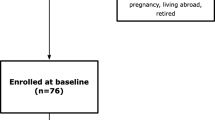Abstract
Participation in sport activities for people with disabilities continues to gain in popularity. With participation in sports, there is an inherent risk of injury. A review of current sport epidemiological studies was used and we concluded that injury patterns for this population are similar to those for athletes without disabilities. Injury data from Paralympic competitions dating back to 1976 indicate that most elite athletes with disabilities seek medical care for illness and musculoskeletal injuries. However, there are very limited injury data regarding Winter Paralympic events or skiing injuries. For those athletes who participate in Summer Paralympic events, abrasions, strains, sprains and contusions are more common than fractures and dislocations. However, location of injuries appears to be disability and sport dependent. Lower extremity injuries are more common in ambulatory athletes (visually impaired, amputee, cerebral palsy) and upper extremity injuries are more frequent in athletes who use a wheelchair. While it appears that the majority of the injuries occurring in this population are minor in nature, inconsistencies in the definition of injury in the literature make this conclusion tenuous. When injuries are expressed as time lost in participation, 52% of injuries resulted in 7 days lost or less, 29% in 8 to 21 days lost and 19% in greater than 22 days lost. The only prospective study addressing injury rates of athletes with disabilities in a manner consistent with other sport epidemiological studies found an injury rate of 9.3 injuries per 1000 athlete-exposures (AE). This injury rate is less than American football (10.1 to 15/1000 AE) and soccer (9.8/1000 AE), and greater than basketball (7.0/1000 AE). It is unclear whether comparative statistics such as these take into consideration the number of illness and injury episodes that resulted from the disability. Further complicating epidemiological studies for athletes with disabilities is the definition of the population and samples of convenience which are frequently used. These samples are often not representative of the multiplicity of disability conditions, levels of competition and range of sport activities available. Prospective studies comparing athletes to sedentary control individuals to measure differences in injury rates, type and frequency between and within disability groups, sports and levels of competition are desperately needed to further the knowledge of injury trends and develop and establish accurate injury prevention programmes.




Similar content being viewed by others
References
DePauw KP, Gavron SJ. Disability and sport. Champaign (IL): Human Kinetics, 1995
Kegel B, Malchow D. Incidence of injury in amputees playing soccer. Palaestra 1994; 10: 50–4
Wilson PE, Washington RL. Pediatric wheelchair athletics: sports injuries and prevention. Paraplegia 1993; 31: 330–7
McCormack DAR, Reid DC, Steadward R, et al. Injury profiles in wheelchair athletes: results of a retrospective survey. Clin J Sports Med 1991; 1: 35–40
Taylor D, Williams T. Sport injuries in athletes with disabilities: wheelchair racing. Paraplegia 1995; 33: 296–9
Burnham R, May L, Nelson E, et al. Shoulder pain in wheelchair athletes: the role of muscle imbalance. Am J Sports Med 1993; 21: 238–42
Burnham R, Higgins J, Steadward R. Wheelchair basketball injuries. Palaestra 1994; 10: 43–9
Curtis K, Dillon DA. Survey of wheelchair athletic injuries: common patterns and prevention. Paraplegia 1985; 23: 170–5
Ferrara MS, Davis RW. Injuries to elite wheelchair athletes. Paraplegia 1990; 28: 335–41
Burnham R, Newell E, Steadward R. Sports medicine for the physically disabled: the Canadian team experience at the 1988 Seoul Paralympic games. Clin J Sports Med 1991; 1: 193–6
Richter KJ, Hyman SC, Mushett CA, et al. Injuries in world class cerebral palsy athletes of the 1988 South Korea Paralympics. J Osteopath Sport Med 1991; 7: 15–8
Jackson RW, Fredrickson A. Sports for the physically disabled: the 1976 Olympiad (Toronto). Am J Sports Med 1979; 7: 293–6
Reynolds J, Stirk A, Thomas A, et al. Paralympics: Barcelona 1992. Br J Sports Med 1994; 28: 14–7
Ferrara MS, Palutsis GR, Snouse S, et al. A longitudinal study of injuries to athletes with disabilities. Int J Sports Med 2000; 21: 221–4
Ferrara MS, Buckley WE, McCann BC, et al. The injury experience of the athlete with a disability: prevention implications. Med Sci Sports Exerc 1992; 24: 184–8
Ferrara MS, Buckley WE, Messner DG, et al. The injury experience and training history of the competitive skier with a disability. Am J Sports Med 1992; 20: 55–60
Ferrara MS, Buckley WE. Athletes with disabilities injury registry. Adapt Phys Act Q 1996; 13: 50–60
Bloomquist L. Injuries to athletes with physical disabilities: prevention implications. Phys Sports Med 1986; 14: 96–105
Shephard RJ. Sports medicine and the wheelchair athlete. Sports Med 1988; 4: 226–47
Magnus BC. Sports injuries, the disabled athlete, and the athletic trainer. Athlet Training 1987; 22: 305–10
van Mechelen W, Hlobil H, Kemper H. Incidence, severity, aetiology and prevention of sports injuries: a review of concepts. Sports Med 1992; 14: 82–9
Laskowski ER, Murtaugh PA. Snow skiing injuries in physically disabled skiers. Am J Sports Med 1992; 20: 553–7
Boninger ML, Robertson RN, Wolff M, et al. Upper limb nerve entrapment in elite wheelchair racers. Am J Phys Med Rehabil 1996; 75: 170–6
Buckley WE, Powell JP. NAIRS: an epidemiological overview of the severity of injury in college football. Athlet Training 1982; 18: 279–82
Buckley WE. Five year overview of sport injuries: the NAIRS model. J Phys Educ Rec Dance 1982; 17: 36–40
Powell JP. National high school injury registry. Am J Sports Med 1988; 16: S134–5
Author information
Authors and Affiliations
Corresponding author
Rights and permissions
About this article
Cite this article
Ferrara, M.S., Peterson, C.L. Injuries to Athletes With Disabilities. Sports Med 30, 137–143 (2000). https://doi.org/10.2165/00007256-200030020-00006
Published:
Issue Date:
DOI: https://doi.org/10.2165/00007256-200030020-00006




